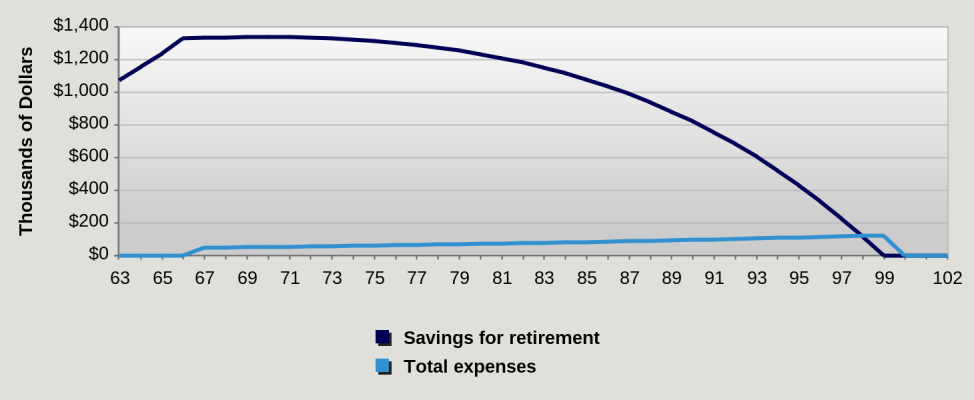ElizabethT
Full time employment: Posting here.
Hello to all of you, and thank you for all that you share. Quite amazing I must say, having spent some time now perusing this forum.
At this risk of appearing insincere, which I am definitely not, I'm putting out our current profile to solicit opinions on whether we are approaching out spend too conservatively given our resources. My husband terms it my 'Depression mentality' which is probably apt given our resources, but the truth is I was left permanently scared by the 2008-2011 recession.
Here are our stats:
Age 60 & 54, living off of banked cash primarily, until two small pensions totally $12,000 a year, and SS totaling $30,000 in 2020, then an additional $23,000 in 2026 kick in.
Assets: $5 million, not including our home. As mentioned above, we have enough cash parked in non-retirement accounts to carry us for at least five years.
Current Plan: Our current WR of 2.5% is based on current cash assets only, and is therefore not taking into consideration our upcoming pensions and SS. Our strategy, more for my post-recession peace of mind than anything, is to stay with a 2.5% WR for our remaining lifetimes, and enjoy the 'raises' we'll receive once the pension and SS kick in.
The Question: Are we being unnecessarily conservative in our approach? If so, am curious what WR strategy some of you might employ instead?
And yes, am aware our assets are sizable, but it's a sincere question, and I think one that could apply to someone with $1 mill, $2 mill or whatever if a similar LBYM situation is being created, particularly if a result of fear, which I believe is the case for me.
At this risk of appearing insincere, which I am definitely not, I'm putting out our current profile to solicit opinions on whether we are approaching out spend too conservatively given our resources. My husband terms it my 'Depression mentality' which is probably apt given our resources, but the truth is I was left permanently scared by the 2008-2011 recession.
Here are our stats:
Age 60 & 54, living off of banked cash primarily, until two small pensions totally $12,000 a year, and SS totaling $30,000 in 2020, then an additional $23,000 in 2026 kick in.
Assets: $5 million, not including our home. As mentioned above, we have enough cash parked in non-retirement accounts to carry us for at least five years.
Current Plan: Our current WR of 2.5% is based on current cash assets only, and is therefore not taking into consideration our upcoming pensions and SS. Our strategy, more for my post-recession peace of mind than anything, is to stay with a 2.5% WR for our remaining lifetimes, and enjoy the 'raises' we'll receive once the pension and SS kick in.
The Question: Are we being unnecessarily conservative in our approach? If so, am curious what WR strategy some of you might employ instead?
And yes, am aware our assets are sizable, but it's a sincere question, and I think one that could apply to someone with $1 mill, $2 mill or whatever if a similar LBYM situation is being created, particularly if a result of fear, which I believe is the case for me.

